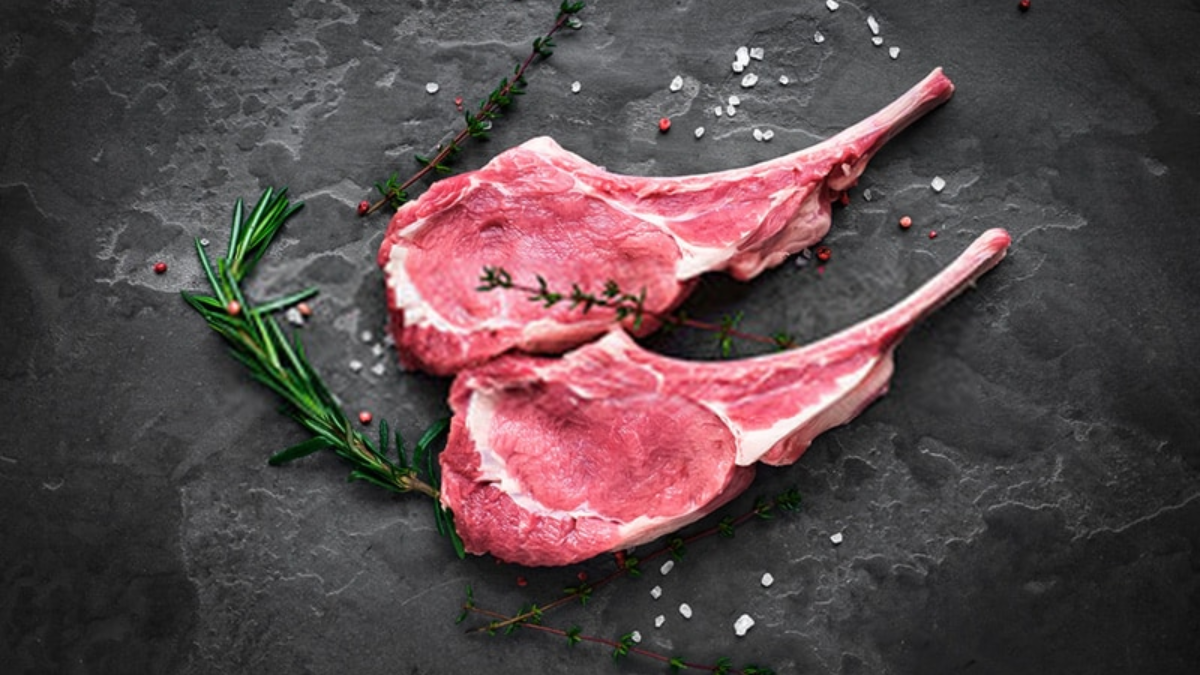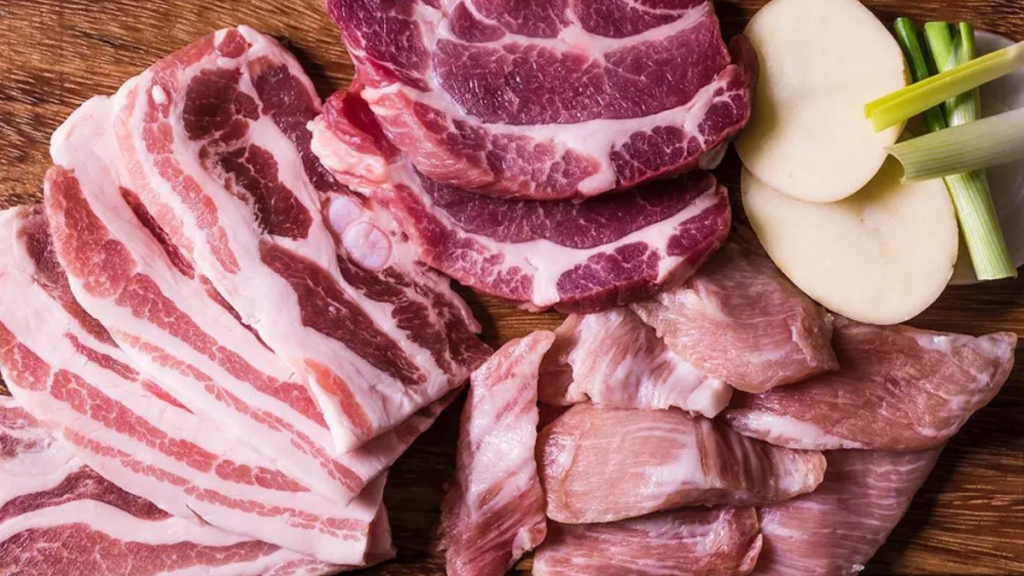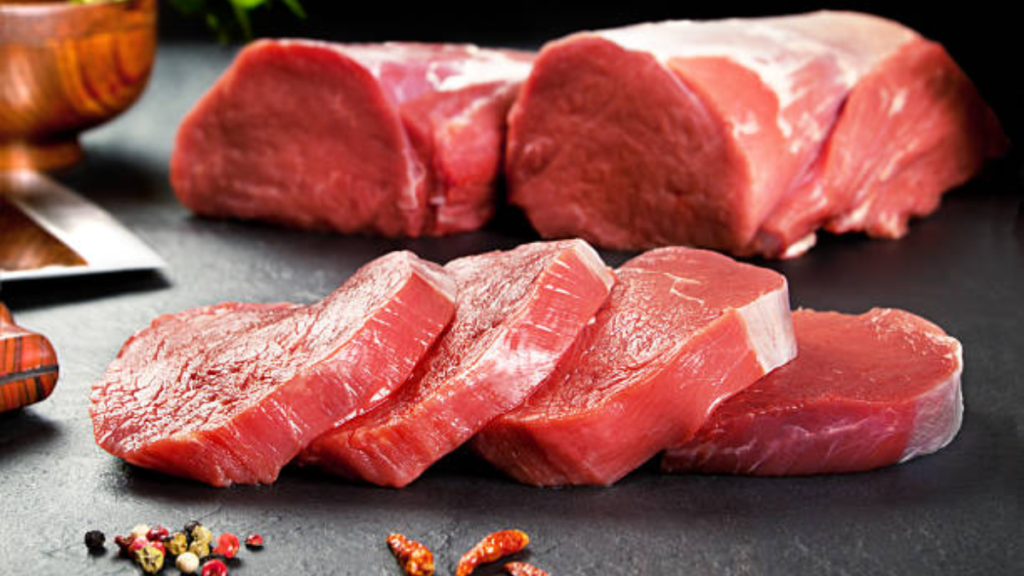Veal is meat from calves, most commonly male dairy calves between four and six months. It’s more expensive than beef and is popular in Italian, French, German, Swiss, Hungarian, and Czech cuisines. Veal gets its light pink color from its milk or formula-fed diet and hemoglobin concentration. Veal contains less iron than beef because it contains less hemoglobin. Here’s all you need to know about veal, including health advantages. To know veal nutrition facts read further them.
Veal is a high-quality protein source, with 24 grams of protein per 100-gram meal, 8 grams of fat, 0 grams of sugar, and 0 grams of carbohydrates. Veal is high in protein and iron, and it has a higher nutritional value per ounce than chicken or beef. When it comes to selecting a cut of meat, though, it’s not the first thing that comes to mind. Regardless of the cut, Veal is flavorful meat that works well in a variety of cuisines.
Veal Nutrition Facts
What is Veal Meat?
Veal is meat from calves that are usually six to eight months old but can be much younger. Veal calves are typically male Holstein-Friesians who cannot produce milk and are sold to the dairy business to be butchered for profit. It is a popular cut of meat in Europe, with the EU accounting for roughly 82 percent of global veal production.
The meat is rarely eaten in the United Kingdom and the United States, where veal consumption has declined since the 1960s. It once had a reputation for being particularly brutal, which farmers in the United Kingdom and the United States have worked hard to change. Despite advances in several national veal sectors, however, the realities of veal production remain harsh. Because of its close ties to dairy, Veal provides a moral hazard that extends beyond the purchase of the meat.
What are the Health Benefits?
Veal meat has a lot of health benefits, and here are some of them:
Improves Cholesterol
Even though old superstitions persist that red meat causes heart disease, the contrary is true. However, scientists attempt to dispel misleading notions about red meat by producing data that incorporates the truth.
Veal (and other red meat) promotes heart health and helps to enhance blood lipid profiles and cholesterol levels. One study investigated the effects of pig and veal on serum lipids (cholesterol) and found that after six weeks of consuming either pork or veal, participants in both groups showed a 5% drop in low-density lipoprotein (bad cholesterol).
Muscle Growth and Maintenance
One of the most straightforward strategies to help you gain and retain muscle is to eat more protein. Veal is also high in lean protein, so including it in your diet may help you gain muscle.
Furthermore, research reveals that beef is a portion of fantastic muscle-building food. According to one study, elderly persons who consume beef daily have higher muscle mass and better nutritional conditions than those who do not.
Veal also includes roughly 2 grams of the critical amino acid leucine, which is involved in muscle protein synthesis.
Boosts Brain Function
Vitamin B12 can be found in abundance in veal. Brain function and other body systems will suffer if you don’t get enough B12 in your diet. It’s crucial to eat vitamin B12-rich foods like veal regularly to keep your mind sharp. While low B12 levels are not a risk factor for cognitive decline, they may be a contributing factor to cognitive function.
14 A couple of other studies indicated that low vitamin B12 levels are linked to cognitive impairment and that supplementation is sufficient if the diet fails to deliver enough B12.
Help Reduce Blood Pressure
Potassium-rich foods are essential for blood pressure regulation. Because potassium is essential in fluid balance and the rate at which blood pumps through your veins, it is essential. You can develop high blood pressure if you consume too much sodium, and potassium counteracts sodium’s effects on your heart and blood pressure.
Varieties
Veal is graded in the same way as beef, and the five grades are prime, choice, good, standard, and utility. Prime cuts feature more marbling and are more delicate, and Prime cuts are more expensive and only available in high-end restaurants and markets. The choice is the most frequent in local markets and has less marbling than prime.
Is Veal a Better Choice?
Are you tired of the healthy meat options of chicken or turkey? You might be shocked, but Veal could be exactly what you’re looking for. Red meat has more cholesterol and saturated fat than chicken, turkey, or fish, but it can still be part of a balanced diet.
Veal is soft red meat from young animals with slightly greater cholesterol than beef. The leanest cuts are sirloin, rib chop, loin chop, and top round. Veal has 20 to 25% fewer calories than beef on average. Despite this, there are still a lot of flavors. It has a more delicate flavor and texture than beef.
Veal is high in protein and iron, and it has a higher nutritional value per ounce than chicken or beef. When it comes to selecting a cut of meat, though, it’s not the first thing that comes to mind. Regardless of the cut, Veal is flavorful meat that works well in a variety of cuisines. Veal marsala is a popular meal that you should try.
Beef vs. Veal
The beef comes from older cattle, while veal comes from younger animals. The color of ‘English Rose’ veal or high welfare veal is a bright pink, while beef is a darker red. But how does the meat differ in flavor? Veal is slightly more tender than beef since the muscles are not exercised as long, and it has a considerably more delicate flavor. Because veal is so much more tender than beef, it is easier for our bodies to digest. Here are some examples of how beef and veal nutritionally differ from one another…
There were 172 calories in little under 100g of veal and 170 calories in the same size piece of beef. Red meat is high in vitamin B, necessary for maintaining energy levels and a healthy metabolism. Vitamin B-12 levels in veal were 0.99 micrograms compared to 2.28 micrograms in beef. Vitamin B-6 levels in veal and beef are similar, with 0.306 milligrams in veal and 0.238 milligrams in beef. Zinc is found in abundance in both beef and veal. Veal has 3.37 milligrams of zinc, and beef has 3.83 milligrams, which is almost a quarter of the zinc we require each day.
The beef had slightly more minerals, whereas veal had somewhat more vitamins. However, both types of meat have equivalent protein, fat, and calorie content, and both types of meat are a healthy element of a balanced diet.
What does Veal Taste Like?
Veal must taste incredible for a delicacy created from the flesh of newborn cows. After all, if it didn’t, we’d be slaughtering children for no cause.
The issue about veal is that the texture is more important than the taste. In a general conversation on ChowHound, a poster recounted how his cooking professors taught him that veal has a sought-after texture that matches exceptionally well with sauces but has little taste on its own. The majority of respondents agreed, bringing up the example of filet mignon as a possible analogy.
On a Thrillist post where chefs choose their best and worst meats, filet mignon, the once-prized steak, gets a good thrashing. “It’s garbage,” chef Michael White says flatly. “It’s a non-working muscle, so it’s incredibly soft (since the cow doesn’t use it), but it’s flavorless and only acceptable on a lengthy plane flight.” Six additional chefs who were interviewed concurred. Because veal is made from calves, none of their muscles have had time to mature into the hardened steaks that distinguish the remainder of the adult cow from filet mignon. For people who appreciate veal, the taste and, to some extent, the veal itself is unimportant. The pillowy suppleness of the meat is very significant.
Storage and Food Safety
Take the veal home and store it in the refrigerator at 40 degrees Fahrenheit or lower. Within 3 to 5 days, use veal chops and roasts. Use ground veal or stew meat within 1 to 2 days of purchase.
Veal may be frozen for a long time. Use frozen veal chops or roasts within 4 to 6 months for best quality or ground veal or stew meat within 3 to 5 months for best quality. Refrigerate cooked veal as soon as possible, and discard anything left out for more than 2 hours. Veal that has been cooked should be consumed within 3 to 4 days.
Conclusion
Veal is simply a more tender and youthful version of beef, and you may prepare it in the same way you would beef. It can be ground for bolognese or burgers, breaded as a cutlet base, grilled like short ribs, stuffed like a turkey breast, or skewered like a kebab.
Although Veal isn’t the most popular meat on the planet, the average consumer in the United States consumes 0.2 pounds of veal per capita, down from 0.7 pounds in 2000. On the other hand, the French market is the world’s largest, accounting for 35 percent of European veal consumption and 82 percent of global veal consumption. It’s lower in fat and cholesterol than beef, and it’s higher in minerals like protein, riboflavin, and B6. Veal reared on pasture has a similar flavor to beef but is leaner and juicier. Chefs, in particular, are excited to try it out.



